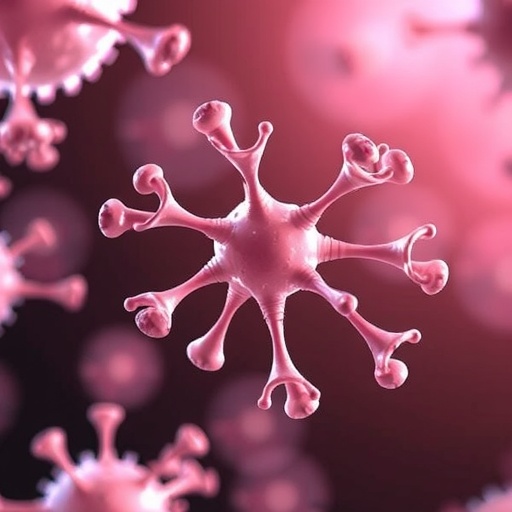Technological advancements in the field of genetics have propelled CRISPR (clustered regularly interspaced short palindromic repeats) and its associated Cas (CRISPR-associated) proteins to the forefront of modern biotechnology. The CRISPR-Cas system, originally identified as a defense mechanism in prokaryotic organisms against viral infections, has evolved into a powerful tool for editing genomic sequences with precision and efficiency. This remarkable ability to cleave and modify target nucleic acid sequences has not only revolutionized the landscape of human gene editing, but it is also expanding into novel therapeutics targeting pathogenic and commensal bacteria living in and around the human body.
As researchers delve deeper into the mechanics of CRISPR-Cas systems, new variants and constructs are being engineered that allow for the disarming of specific bacterial strains. This groundbreaking approach opens pathways for innovative treatment options for infections, with the potential to combat antibiotic resistance. By targeting the unique genetic sequences found in harmful microbes, CRISPR-Cas technologies can be configured to either deactivate essential functions of these bacteria or induce their cell death, thereby eliminating them from the host ecosystem.
The intricacies of DNA-targeting methodologies have become a focal point of research, warranting a closer examination of the various strategies that can be employed. Through the design of specific guide RNAs that lead CRISPR-Cas complexes to target bacterial DNA, it is possible to disrupt critical genes associated with virulence factors, establishing a new frontier in our ability to manage infectious diseases. In particular, this precision allows for the tailored treatment of bacterial infections, tantalizing clinicians with the prospect of addressing persistent strains that exhibit resistance to traditional antibiotics.
On the other hand, RNA-targeting strategies represent a complementary approach to genetics-based therapies, where the focus shifts from the bacterium’s genomic DNA to its transcribed RNA. This technique has the potential to interfere with the expression of specific proteins necessary for the survival of bacterial cells. Utilizing CRISPR-Cas systems to degrade messenger RNAs in pathogenic bacteria could stifle their growth and replication, rendering them impotent in causing disease. As these strategies develop, the implications for therapeutic applications become clearer and more promising in the fight against microbial infections.
Delivery of CRISPR-Cas tools presents a critical challenge in practical applications. Traditional methods of introducing these technologies into prokaryotic cells tend to be limited by the physical and biological barriers presented by microbial membranes. To address this, the use of bacteriophages—viruses that specifically infect bacteria—has emerged as a notable delivery vehicle for CRISPR systems. By genetically engineering phages to express CRISPR components, researchers can utilize these naturally occurring entities to effectively transfer editing machinery into target bacterial cells, thereby overcoming some of the barriers that currently limit therapeutic efficacy.
Additionally, conjugation offers an alternative pathway for delivery, harnessing the natural mechanisms that certain bacteria use to exchange genetic material. By coupling CRISPR-Cas constructs with plasmids that can be transferred between microorganisms, scientists are exploring how this method can facilitate the spread of CRISPR gene-editing technology among bacterial populations, paving the way for wider applications in microbiome modulation.
Despite the advantages posed by CRISPR-Cas applications in microbiology, the realization of these techniques in clinical settings is fraught with challenges. Intracellular barriers to maintaining and expressing CRISPR-engineered tools complicate the clinical translation of these innovations. Stability, efficiency, and the unintended consequences of editing must all be carefully evaluated to ensure that therapeutic interventions do not disrupt the delicate balance of the human microbiome.
As research progresses into the therapeutic possibilities of CRISPR-Cas technologies in treating infections, a wealth of opportunities emerges. The modulation of microbial communities presents not only a competitive edge against pathogenic bacteria but also a means to promote beneficial organisms that contribute to overall health. This dual capability of targeting invaders while enhancing the resident microbiota encapsulates the future potential of CRISPR-based therapies for human health.
In the quest to translate laboratory findings into patient-centered solutions, potential clinical applications range from treating chronic infections to custom-tailoring treatments aimed at restoring microbial diversity in conditions like inflammatory bowel disease. Each new study paves the way for a deeper understanding of how these systems interact with human health and disease, creating a dynamic landscape of promising therapeutic avenues.
Reflecting on the progress made thus far, it is evident that the challenges of clinical translation are significant but not insurmountable. With ongoing research aimed at refining delivery methods and minimizing off-target effects, scientists remain steadfast in their efforts to unlock the full potential of CRISPR-Cas technologies to reshape how we approach infectious disease treatment.
The burgeoning field of microbiome research only adds layers of complexity to the application of CRISPR-Cas therapies. Understanding the implications of altering bacterial populations requires a cautious approach, as shifts in microbial balance can result in unforeseen consequences. Emphasizing the need for carefully controlled studies, researchers must weigh the benefits of targeted disarmament against the broader ecological impacts within the host environment.
As we move forward, the excitement surrounding CRISPR-Cas therapies targeting bacteria reflects a paradigm shift in biomedicine. The integration of these technologies into standard treatment protocols will undoubtedly evolve, requiring collaboration among geneticists, microbiologists, clinicians, and regulatory bodies to construct a framework that ensures safety and efficacy.
In conclusion, the applications of CRISPR-Cas technologies to target bacteria are maturing rapidly, offering a glimpse into the future of infectious disease therapy and microbiome management. As scientists continue to innovate and refine these tools, we can anticipate a new generation of treatments that harness the power of precision editing to improve human health while addressing the pressing challenge of antibiotic resistance and fostering healthy microbial ecosystems.
Subject of Research: CRISPR–Cas therapies targeting bacteria.
Article Title: CRISPR–Cas therapies targeting bacteria.
Article References:
Benz, F., Beamud, B., Laurenceau, R. et al. CRISPR–Cas therapies targeting bacteria.
Nat Rev Bioeng 3, 627–644 (2025). https://doi.org/10.1038/s44222-025-00311-8
Image Credits: AI Generated
DOI: https://doi.org/10.1038/s44222-025-00311-8
Keywords: CRISPR, Cas proteins, gene editing, infectious diseases, antibiotic resistance, microbiome, bacteriophages, RNA-targeting, DNA-targeting, therapeutic applications, gene therapy, precision medicine.




